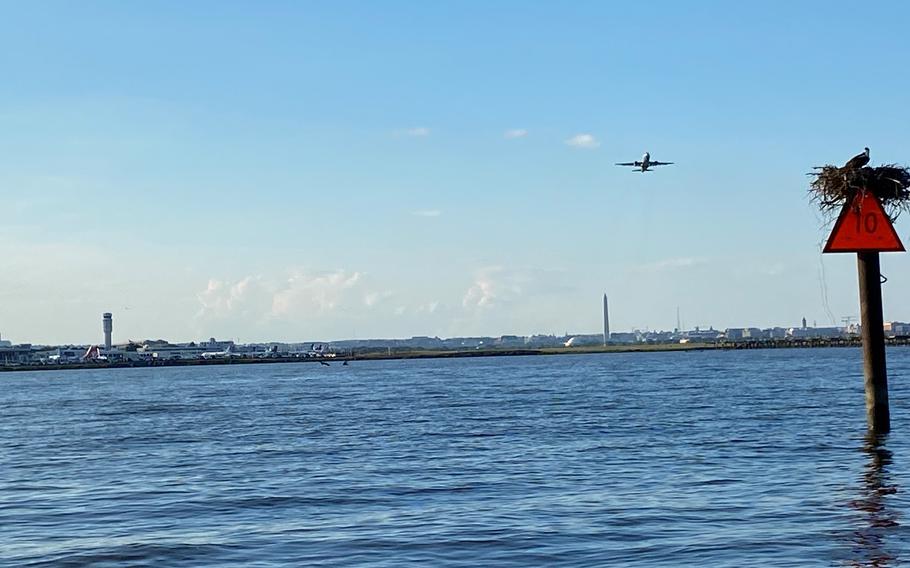
A plane departs from Reagan National Airport in Arlington, Va., on June 25, 2023, shortly after a ground stop was lifted. FAA officials said an overheated power cable caused the ground stop. (Tim Richardson/Washington Post)
A ground stop that delayed flights Sunday at the Washington region’s three major airports for more than two hours was blamed on an overheated power cable, Federal Aviation Administration officials said Monday.
The FAA said technicians were conducting routine inspections of power panels at its Potomac Terminal Radar Approach Control center (TRACON) when a temperature reading indicated one power cable was too hot and needed to be replaced. The facility in Warrenton, Va., about 45 miles west of Washington, provides air traffic control services for airports in the D.C. region, Richmond and Charlottesville.
The replacement process forced controllers in the center to shift to a backup system about 4:40 p.m. to communicate with aircraft. FAA officials opted to reduce the number of flights bound for the Washington area to avoid strain on the system until normal operations could resume.
About 10 minutes after moving to the backup, the FAA then paused incoming flights to Baltimore-Washington International Marshall, Reagan National and Dulles International airports, as well as Richmond International Airport, officials said.
The pause — combined with delays in New York and elsewhere because of thunderstorms — contributed to two difficult days of travel for air passengers during a relatively trouble-free summer. It came after airlines and regulators spent months preparing for an onslaught of summer travelers while dealing with a shortage of air traffic controllers and opening new flight routes to give airlines more options.
According to flight-tracking service FlightAware, more than 9,800 flights within, into or out of the United States were delayed Sunday and more than 1,400 were canceled — with even more flights canceled Monday. It is the most cancellations in a day since the start of the summer travel season.
New York-area airports were among the hardest-hit Sunday, with 47% of departures at LaGuardia, 44% of departures at Newark Liberty International and 39% at John F. Kennedy International delayed. At BWI, 38% of departures were delayed, while 37% of departures at National and Dulles were delayed, according to FlightAware.
Similar problems continued Monday, when thunderstorms again caused widespread delays at all three New York-area airports. In the D.C. region, severe storms were predicted to hit later in the day, raising the potential for flight delays.
During Sunday’s ground stop in the Washington region, flights from New York airports were allowed to continue operating because the TRACON center was able to handle the volume, FAA officials said. However, flight radar data indicates only a handful of flights came in or out of the region for about two hours.
In some cases, flights bound for D.C.-area airports were diverted. Bob Kerlik, a spokesman for Pittsburgh International Airport, said that airport received 28 diversions. Of those, seven originally were to land at Dulles, three at National and four at BWI.
The cable at the center of the D.C. ground stop was fixed and the FAA said flights resumed at 7 p.m. Sunday. The agency is investigating what caused the cable to overheat.
The incident could bring more scrutiny of the agency’s operations and infrastructure at a time when lawmakers are negotiating a measure to fund the FAA. An outage of a pilot notification system in January raised concerns about whether the agency had enough resources to manage systems that are critical to the operation of the national airspace system.
Potomac TRACON handles flights entering and departing the D.C. region’s airspace. TRACON facilities nationwide generally handle flights operating within a 30- to 50-mile radius of an airport, generally up to about 10,000 feet.